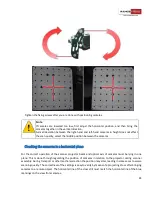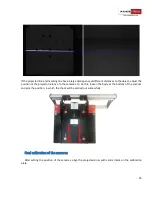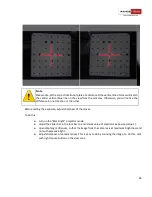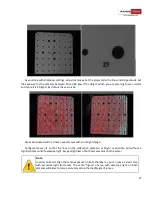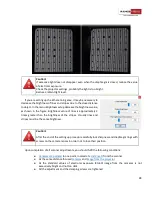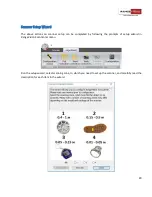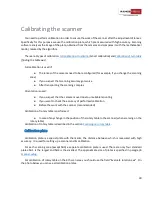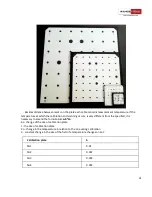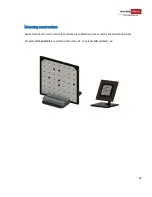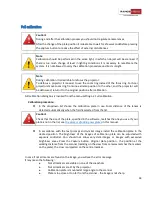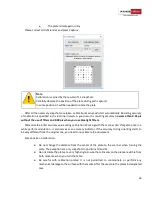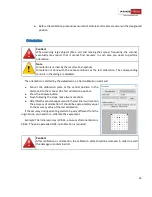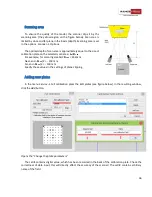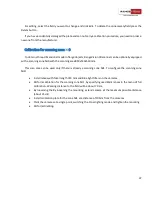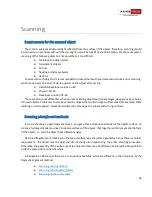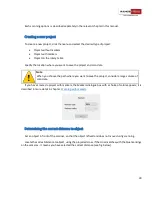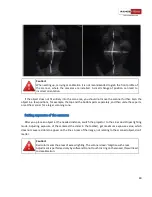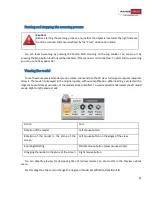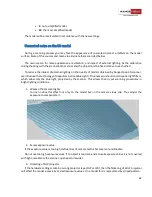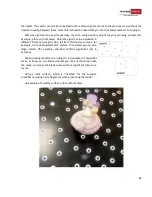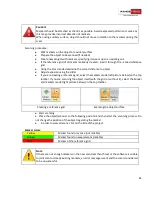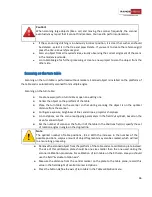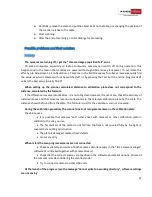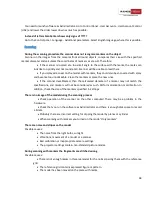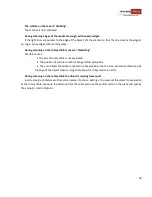
38
Scanning
Requirements for the scanned object
The scanner analyses structured light reflected from the surface of the object, therefore, scanning should
be carried out in premises without direct sunlight, as well as free of dust and vibration. For the same reason
scanning of the following objects is not possible or is too difficult.
●
too black and dark objects
●
transparent objects
●
mirrors
●
flecking and glossy objects
●
deep fur
To work with such objects it is recommended to process them with special aerosol products prior scanning,
which leave a very thin coat of white powder on the object after drying.
●
HELLING Developer solution U89
●
Sherwin D-100
●
Developer solution ПС-33
There are also some difficulties when you are scanning objects with sharp edges, deep grooves or holes,
thin wall objects. Problems can also be caused by objects that contain large contrast areas (for example, black
lettering on white paper). Geometrical distortion may appear in places with strong contrast.
Scanning principle and methods
If you're shooting a single fragment (scan) - you get a three-dimensional model of the object surface. To
create a full object model you need to obtain surfaces of the object, that together entirety replicate the form
of the object, i.e. scan the object from different angles.
Obtained fragments are combined in the special software by the surface geometry, hence there is another
requirement - the object must be rigid and do not change its shape during the entire scanning procedure.
Otherwise, the geometry of the same area of the object surface may be different, and it will be impossible to
unite the pieces into a coherent whole.
In RangeVision 3D scanner there are 3 scan options available, which are different, in the first place, by the
fragment alignment method:
●
●
●

